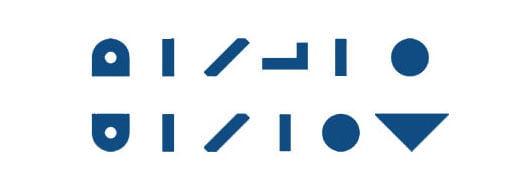نوع مقاله : مقالۀ پژوهشی
نویسندگان
- محمدحسین شریف زادگان 1
- امیر فتحی فرزانه 2
1 استاد دانشکدۀ معماری و شهرسازی، دانشگاه شهید بهشتی، تهران، ایران.
2 پژوهشگر دکتری شهرسازی، دانشکدة معماری و شهرسازی، دانشگاه شهید بهشتی، تهران، ایران.

باغ نظر (ماهنامه)
دوره 18، شماره 100
مهر 1400
صفحه 122-109
بیان مساله: «اوربانیزاسیون» به مثابه یکی از پیشران های اصلی دگرگونی های اجتماعی/فضایی در دهه های اخیر همواره مورد توجه بوده، اما قرائت های گوناگون از سیر تغییرات محتوایی این مفهوم در انطباق با ویژگی های زمینه ای و زمانه ای آن، به طور جدی مورد تحلیل و بحث قرار نگرفته است. طوری که معادل سازی هایی از قبیل شهرنشینی، شهری شدن، شهری سازی، ایجاد مدنیت و حتی شهرگرایی برای پوشش مفهوم های پیچیده آن به کار رفته است. بدیهی است که معادل سازی در هر نوشتاری یک مساله قراردادی و صوری باشد، با این حال شایسته است مباحث شکلی واژگان از مباحث مفهومی آن جدا گردد.
اهداف پژوهش: این پژوهش با بهره گیری از روش تحلیل لایه ای علی (CLA) در چهار لایه “سطح مشهود و پذیرفته شده”، ” سطح علل کلان وابسته به سیستم”، “سطح گفتمان/ جهان بینی” و “سطح استعاره/ اسطوره” سعی دارد تا ضمن شناسایی خوانش های ممکن بر مبنای گفتمان ها و استعاره های موجود به ارائه چشم اندازهای نظری گوناگون ناشی از مفهوم «اوربانیزاسیون» در ایران بپردازد.
روش پژوهش: تحلیل لایه ای علی بر اساس مصاحبه عمیق/ نیمه ساختار یافته و در راستای شناسایی مضامین اصلی لایه های تحلیل در سطح نخبگان و متخصص های حوزه مطالعات شهری ایران به کار گرفته شده است.
نتیجه گیری: یافته های پژوهش گویای آن است که مفهوم «اوربانیزاسیون» در ایران دارای چهار سطح تحلیلی است. سطح نخست، به عنوان نرخ شهرنشینی ناشی از یک واقعیت عینی و تجربی؛ در سطح دوم همتراز با مفهوم فرایندی شهری شدن؛ در سطح سوم مبتنی بر مفهوم «اوربانیزاسیون» به مثابه یک کنش جمعی با محوریت گشایش افق در امر سیاسی فضا؛ و در سطح چهارم به عنوان امر ذهنی متفاوت، با استعاره رهایی بخش بودن؛ همخوان شده است.
Exploring the Theoretical Perspective of “Urbanization” Concept in Iran Based on the CLA Method
نویسندگان [English]
- Mohammad Hosein Sharifzadegan 1
- Amir Fathi Farzaneh 2
Problem statement: Over the last decades, “urbanization” has always been identified as one of the key driving forces of socio-spatial transformations across the world. However, various interpretations of mutations about this concept are not seriously discussed in accordance with its contextual and temporal characteristics. Literary equivalents such as city growth, urban becoming, city building, civilization, and urbanism have been used to cover its complex concepts in Iran. It is obvious that equivalence in any literature is a conventional and formal issue, however, it is worthwhile to separate the formal issues of words from their conceptual issues. Currently “urbanization” is rapidly evolving and becoming more dynamic.
Research objective: This research tries to use the method of causal layer analysis (CLA) in four layers: (1) level of obvious and accepted, (2) level of macro-related causes, (3) level of discourse/worldview, and (4) level of metaphor/myth. In addition to identifying possible interpretations based on existing discourses and metaphors, this study seeks to provide various theoretical perspectives on the concept of “urbanization” in Iran.
Research method: The causal layered analysis (CLA) method is based on in-depth-semi-structured interviews and has been used to identify the main themes of the analysis layers at the level of elites and experts in the field of urban studies.
Conclusion: The research findings indicate that the concept of “urbanization” in Iran has four levels of analysis. The first level, as the rate of urban growth, arises from an objective and empirical reality. The second level is consistent with the concept of processes of urban becoming. The third level is based on the concept of “urbanization” as a collective action with the focus on opening the horizon in the politic of space. At the fourth level, as a differential subjective matter, it is associated with the metaphor of liberation.
کاوش دورنمای نظری مفهوم «اوربانیزاسیون» در ایران مبتنی بر روش CLA اصل مقاله 491.94 k
صاحب امتیاز: پژوهشکده هنر، معماری و شهرسازی نظر
مدیر مسئول: دکتر سید امیر منصوری
سردبیر: دکتر احمد پوراحمد
دوره انتشار: ماهنامه
شاپا چاپی: 1735-9635
شاپا الکترونیکی: 2251-7197





















